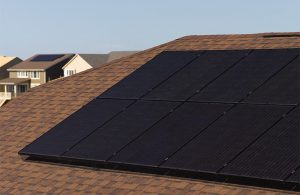Shining a Light on Solar History: When Were Solar Panels First Invented?

The 6% efficiency seen by Chapin, Fuller, and Pearson was only the beginning. In 1960, Hoffman Electric achieved 14% efficiency in PV cells.
The environmental movement gained momentum in the 1970s, where interest in renewable energy, including solar power increased. Local, state, and federal governments and researchers worldwide began investing in solar technology research, which resulted in advancements in photovoltaic technology and improved manufacturing processes.
The University of South Florida created a thin-film cell, which is an alternative to traditional crystalline silicon cells, with 15.89% efficiency in 1992, and it took another twenty years before another breakthrough.
The 21st century witnessed a solar revolution as advancements in materials, manufacturing techniques and efficiency propelled solar panels into mainstream energy solutions. 17.8% efficiency was achieved in 2012 by Solar Frontier, and from there, advancements happened much faster in ideal settings, though the technology isn’t widely available.
Today, solar panels come in various forms, ranging from traditional rooftop installations to solar farms or portable solar chargers. Ongoing research and development focus on pushing the limits – creating more efficient panels, exploring new materials, and finding innovative ways to adapt solar into our daily lives. In 2020, scientists at the National Renewable Energy Lab developed a cell with 47.1% efficiency when tested in ideal conditions, including the best angles and location, lower temperatures, and the best converting technology. While this cell was made differently than currently used solar cells, it predicts a bright future.





